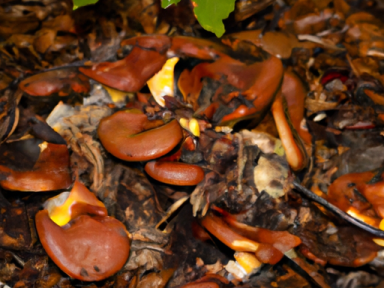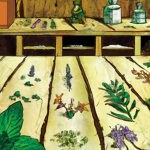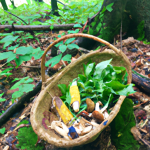
Edible Mushrooms: Safely Identifying and Foraging for Food in the Wild
In times of uncertainty and potential food shortages, it’s important to be prepared and self-reliant. One valuable skill to have is the ability to identify and forage for edible mushrooms in the wild. Mushrooms are a nutrient-rich source of food and can be found in abundance in many environments. However, it’s crucial to educate yourself on the proper techniques and precautions to ensure you are consuming safe and edible varieties.
The Importance of Proper Identification
When foraging for mushrooms, the first rule of thumb is to never consume a mushroom unless you are 100% certain of its identification. While there are numerous delicious and nutritious edible mushrooms, there are also many toxic and deadly species. Mistaking a poisonous mushroom for an edible one can have severe consequences, so it’s crucial to be cautious and informed.
Here are some tips for safely identifying edible mushrooms:
- Consult reliable field guides or seek guidance from experienced foragers. Make sure to use up-to-date resources that provide accurate information on mushroom species and their identifying characteristics.
- Pay close attention to the cap, stem, gills, pores, or other features of the mushroom. These distinguishing characteristics can vary significantly among different species and are essential for accurate identification.
- Take note of the habitat where you found the mushroom. Certain species have specific preferences for growing conditions, and knowing the environment can be helpful in narrowing down the possibilities.
- When in doubt, don’t eat it! Even expert foragers can make mistakes, so it’s crucial to err on the side of caution. Consuming a toxic mushroom can have severe health consequences or even be fatal.
Safe Foraging Practices
Once you’ve successfully identified an edible mushroom, there are still important guidelines to follow to ensure your safety during the foraging process:
- Carry a reliable mushroom identification guidebook with you during your forays. Taking photos or making detailed sketches can also help in identification.
- Don’t rely solely on online resources or smartphone apps for identification, as they are not always accurate or up-to-date.
- Start by foraging for mushrooms with an experienced forager who can help teach you the basics and correct identification techniques.
- Always harvest mushrooms from areas that have not been contaminated by pollutants or pesticides.
- Avoid picking mushrooms that are slimy, have a foul odor, or show signs of decay.
- Never consume mushrooms in large quantities when trying a new species for the first time. Even edible mushrooms can cause adverse reactions in some individuals.
- Clean your mushrooms thoroughly before consuming them. Use a soft brush or cloth to remove any dirt, insects, or debris.
Preparing and Cooking Your Harvest
Once you’ve collected a bountiful supply of edible mushrooms, it’s time to bring them to the table. Follow these steps to prepare and cook your harvest:
- Trim the mushrooms and remove any tough stems, dirt, or insects.
- Rinse the mushrooms under running water briefly, being careful not to soak them, as they tend to absorb water.
- Choose your preferred cooking method, such as sautéing, roasting, or adding to stews and soups.
- Remember to cook mushrooms thoroughly to destroy any potential toxins or microorganisms.
- Enjoy your delicious and nutritious foraged meal!
Foraging for edible mushrooms can be a rewarding and fulfilling experience. However, it’s crucial to prioritize safety and education throughout the entire process. By honing your identification skills and following safe foraging practices, you can enjoy the bounty of the natural world while ensuring your well-being.



GIPHY App Key not set. Please check settings